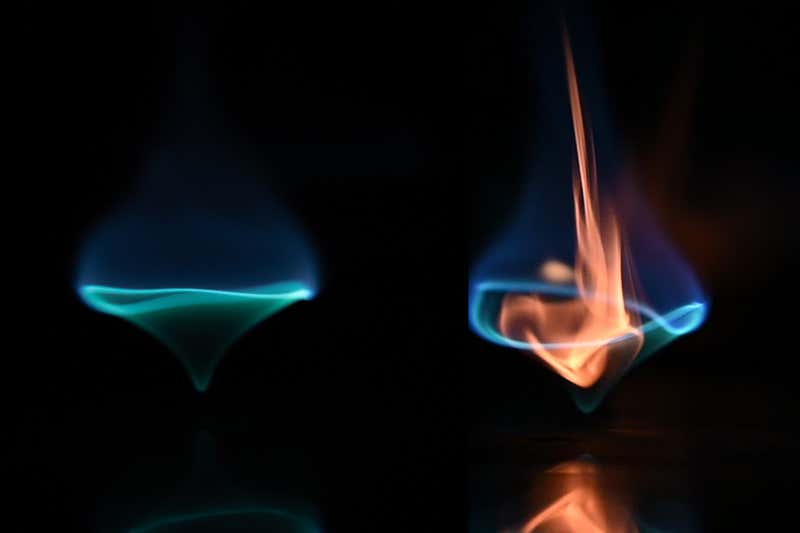
🔥 Blue flame provides more efficient combustion
A blue flame that has puzzled researchers for a few years may be the key to more efficient combustion and lower emissions from energy production.
Share this story!
A few years ago, a new kind of flame was discovered, which was named the blue whirl flame. The flame looks like a blue ring and it aroused great interest in the research world. Now it has been clarified how the flame arises . It turns out that it is the result of three different flames that together create the effect of a meandering ring. What makes the discovery extra interesting, however, is the fact that the combination of the three flames causes all the fuel that is introduced to be burned, which creates a soot-free and efficient combustion. In the long run, this can lead to significantly reduced emissions of particles and that we get more energy per amount of fuel.
By running simulations and testing different mixtures of fuel and oxygen, a research team at the University of Maryland has managed to identify the different parts and also been able to see what conditions could cause them to occur without going through the stage that the blue flame first put them on. the track. That flame is namely unstable and difficult to maintain. It can also be dangerous. If the parts that are included can occur in a stable combustion instead, it will be much easier to use them to create energy from hydrocarbon fuels.
- Burning hydrocarbons is one of our major sources of energy today, but which unfortunately has a major negative impact on the environment and climate. The blue whirl shows a possible way to make combustion more efficient and reduce emissions significantly, which makes us very motivated to continue exploring this possibility of cleaner energy, says Xiao Zhang, one of the researchers behind the discovery, to New Scientist .
Photo: Sriram Hariharan (University of Maryland)
By becoming a premium supporter, you help in the creation and sharing of fact-based optimistic news all over the world.


